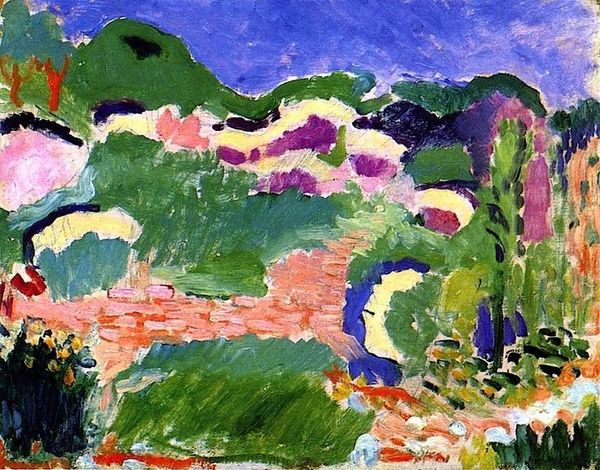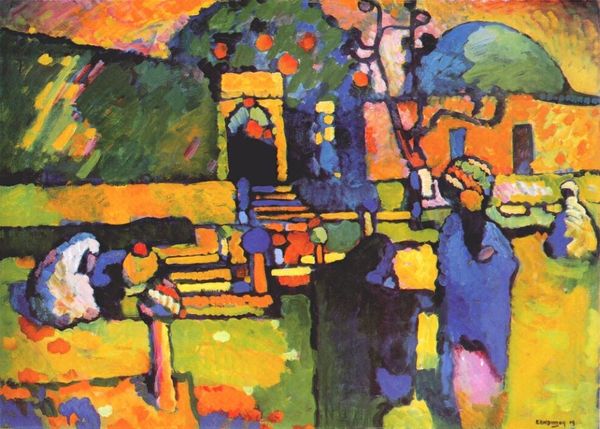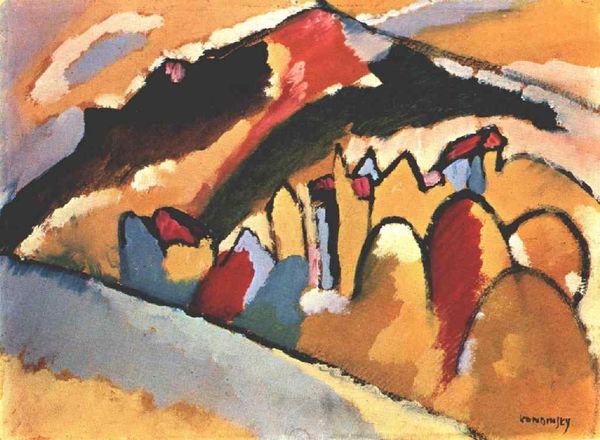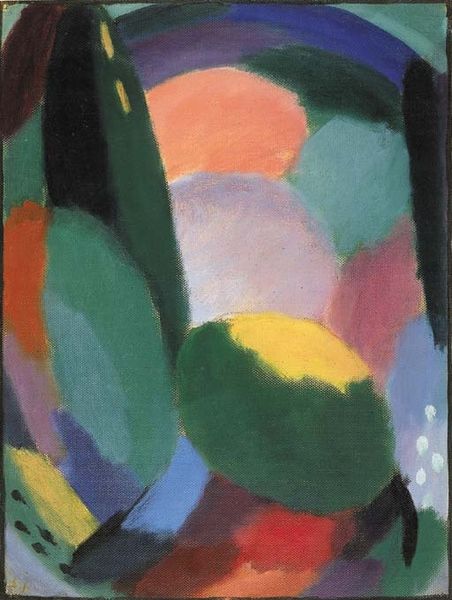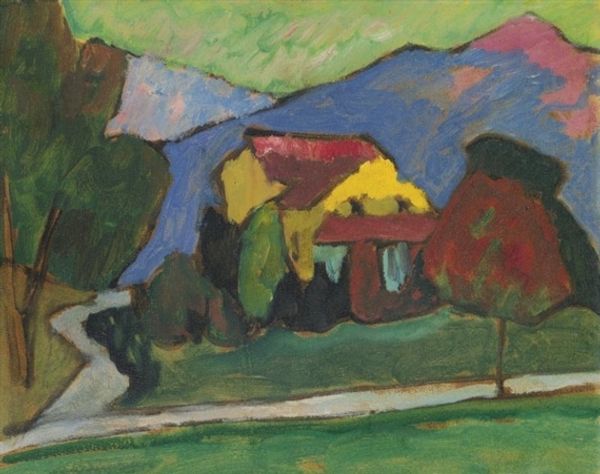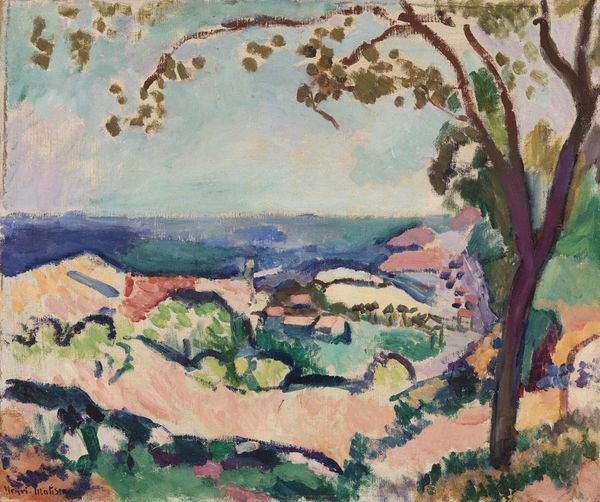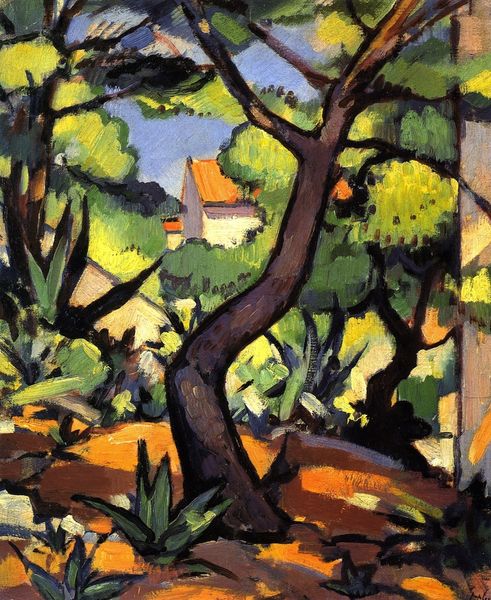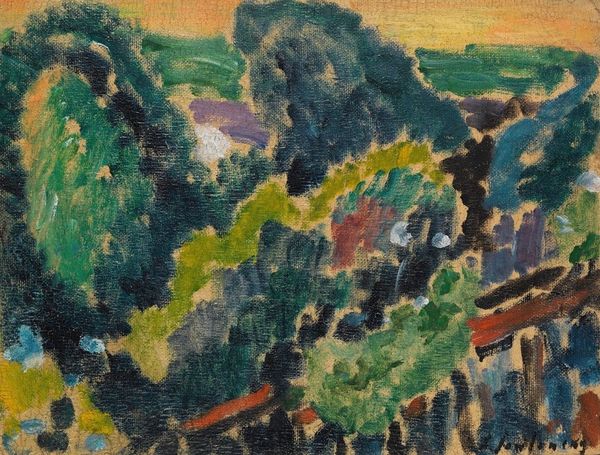
#
natural stone pattern
#
abstract expressionism
#
naturalistic pattern
#
abstract painting
#
animal print
#
abstract pattern
#
organic pattern
#
flower pattern
#
paint stroke
#
swirly brushstroke
Copyright: Public domain
Curator: So, this painting, simply titled "Landscape," was created around 1910 by Amadeo de Souza-Cardoso. What strikes you most when you first look at it? Editor: The way the colors vibrate. It feels both joyous and almost dizzying, like sunlight playing tricks on your eyes after a glass of strong wine. There’s an untamed energy in the brushstrokes. Curator: Indeed, Souza-Cardoso's work, influenced by movements like Cubism and Futurism, sought to capture that very dynamic energy of modern life. Notice how he eschews traditional perspective, opting instead for flattened planes and bold color juxtapositions. This was a revolutionary visual language, a rebellion against academic painting. Editor: I can see that rebellion! But I also sense a strange kind of innocence, a naive approach almost. It doesn't feel cynical or calculated, but more like an outpouring, unfiltered, direct from the eye to the canvas. Curator: That's a fascinating observation. His artistic trajectory certainly wasn’t about adhering to established norms; it was more an exploration of his own emotional landscape filtered through the rapidly changing world around him. It’s worth noting that Portugal, at this time, was undergoing significant political and social upheaval. Editor: Does that instability speak through this painting? Is the chaos intentional or subconscious? Curator: Well, I'd argue that art rarely exists in a vacuum. The burgeoning avant-garde movements were looking for a new pictorial language that matched their dissatisfaction with a pre-industrial society. So, I'd say Souza-Cardoso's 'Landscape' participates in this wider trend by deconstructing the conventional modes of seeing and representing the world around us. The colors pop so much that this image of harmony has undertones of unease and a sort of 'restless calm.' Editor: It makes me think about the power of suggestion versus literal representation. The painting doesn't tell you what to feel, but it evokes a sense of vibrancy, or maybe even turmoil beneath the surface—just as we ourselves possess it, perhaps? It resonates for reasons beyond mere historical accuracy, it tells us of possibilities and the human spirit. Curator: Exactly. That ambiguity is where its power lies. Thanks for walking through this piece with me; I never fail to learn from looking closely together.
Comments
No comments
Be the first to comment and join the conversation on the ultimate creative platform.


